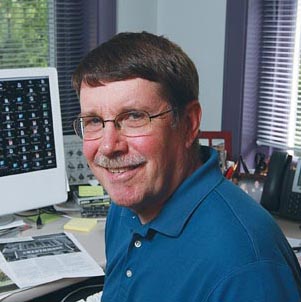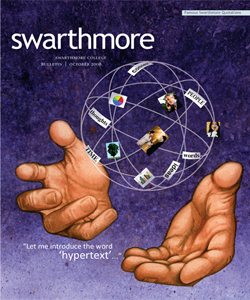Parlor Talk

You cannot keep things in perspective without a certain mindfulness about where you stand in the larger scheme of things. I see history as being less about human beings than about the giant wheels of time that have been turning since the Big Bang—about the planets and the stars. And now, about snow on Mars.
A few weeks ago, in the midst of angry Congressional debate over the financial bailout, scary chaos on Wall Street, and noisy election campaigns, I heard this news: We saw it snowing on Mars.
That just stopped me in my tracks.
Using a laser instrument, the U.S.-launched Phoenix spacecraft detected snow falling through the thin Martian atmosphere about four kilometers above the barren desert surface. “We’ll be looking for signs that the snow may even reach the ground,” said one of the scientists.
The spacecraft touched down in May at 68 degrees north latitude, at the margins of the polar ice cap that will form during Mars’ upcoming northern hemisphere winter. The Phoenix’s primary mission is to dig trenches and analyze subsurface soils, where it has already found water ice—and significant chemical evidence that liquid water also stood on the surface there.
In the midst of economic and political storms on Earth, the news of Martian snow had a tremendously calming effect on me. I remembered my childhood excitement over the first snowflakes swirling outside our classroom windows. For a minute, the teacher couldn’t hold any child’s attention. Our imaginations were outside, anticipating the pure joy of the slippery white stuff.
Of course, a spacecraft feels no such excitement. Yet, although this machine doesn’t draw breath on the forbidding Martian surface (nor could we), it’s an extension of our senses into a world where falling stock prices and falling snow are mercifully unrelated. The Phoenix—so named because it is the completion of an earlier Mars landing project cancelled in 2001—is also a proxy for our hunger for knowledge and our need to imagine other worlds beyond our own.
I felt both as I watched and photographed the installation of the new observatory dome atop the science center. A new generation of Swarthmore students will soon experience such mindful moments as they look beyond Earth to the stars.
I hope they’ll also be mindful of Peter van de Kamp, the Swarthmore professor who pioneered the search for planets beyond our solar system. For my part, the excitement of watching the dome swing into place was tinged with sadness about the loss of Margaret Helfand ’69, architect of the science center, who died before she could see this finishing touch on her masterpiece.
I’m an optimist. (You sort of have to be these days, don’t you?) As I write this, I know neither the outcome of the election nor the future of the economy, although I am sure that there will be both good—and bad—ahead. Whatever happens, I’ll try to remember the day we first saw it snowing on Mars.
 Email This Page
Email This Page